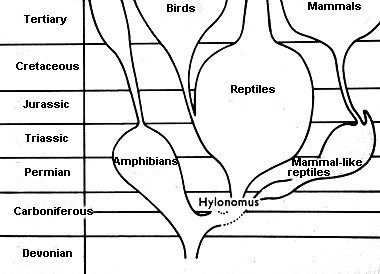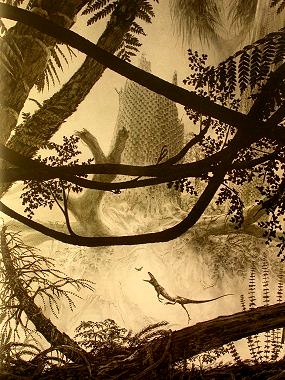

After Czerkas & Czerkas: De oerwereld van de DinosauriŽrs
(1993)
The tree above shows also that Hylonomus (a very early reptile) still lived at the time when the mammal-like reptiles branched off . From this latter group the mammals came forth. Further it can be seen that the birds descend from the reptiles.
Know more?
Reptiles
in general
The fossils of this very old reptile have been found in hollow tree stumps in which the animals were trapped. They couldn't escape and got covered with sand and mud. Their skeletons fossilized. Other quadrupeds underwent the same fate. The link below shows the process with many figures.
How do the scientists know that the fossil is a reptile and not an amphibian? Eggs have not been found but it can be concluded from the structure of the skull. In reptiles some of the bones are merged, which were separate in amphibians.
Know more?
How
Hylonomus was found